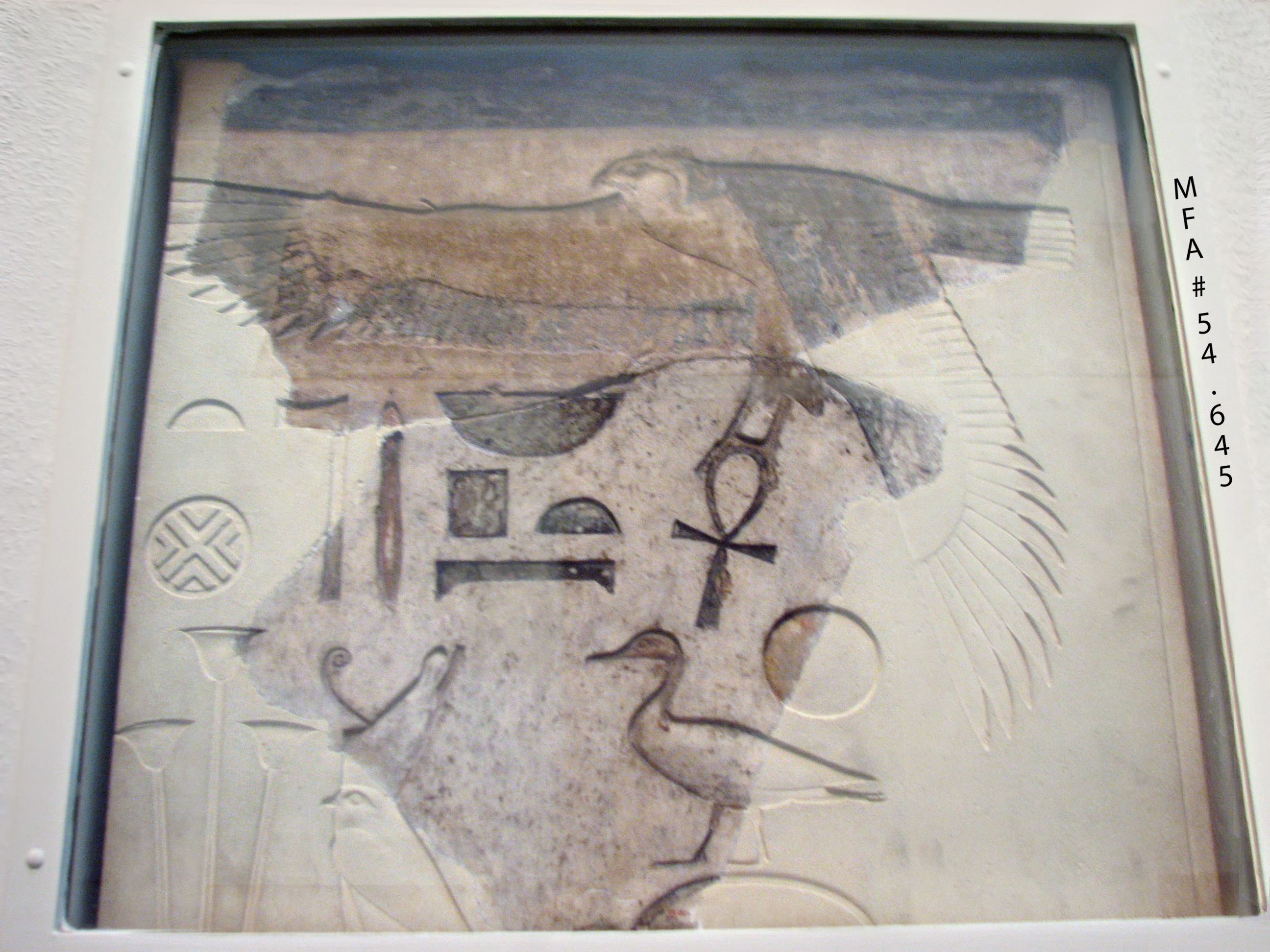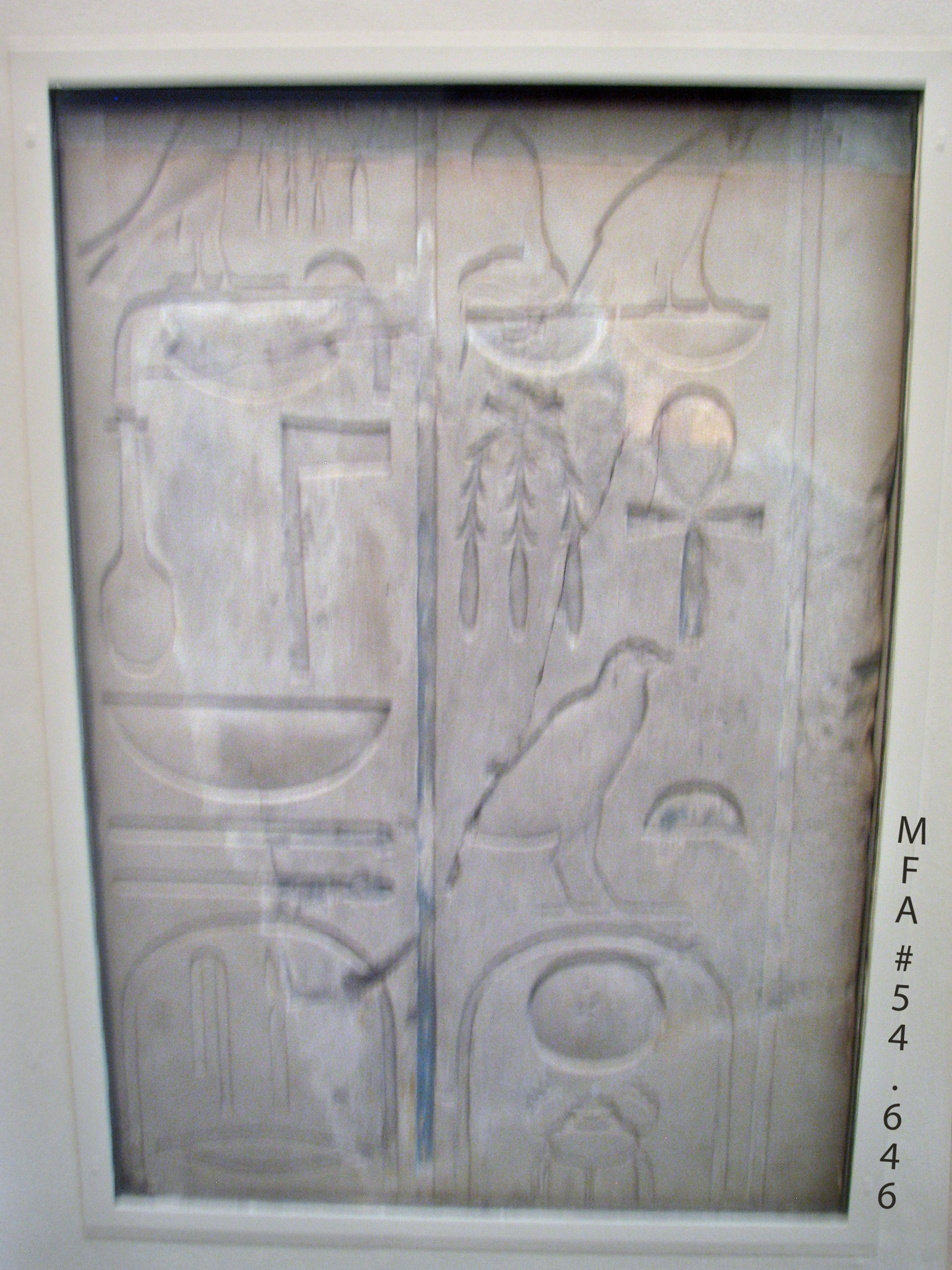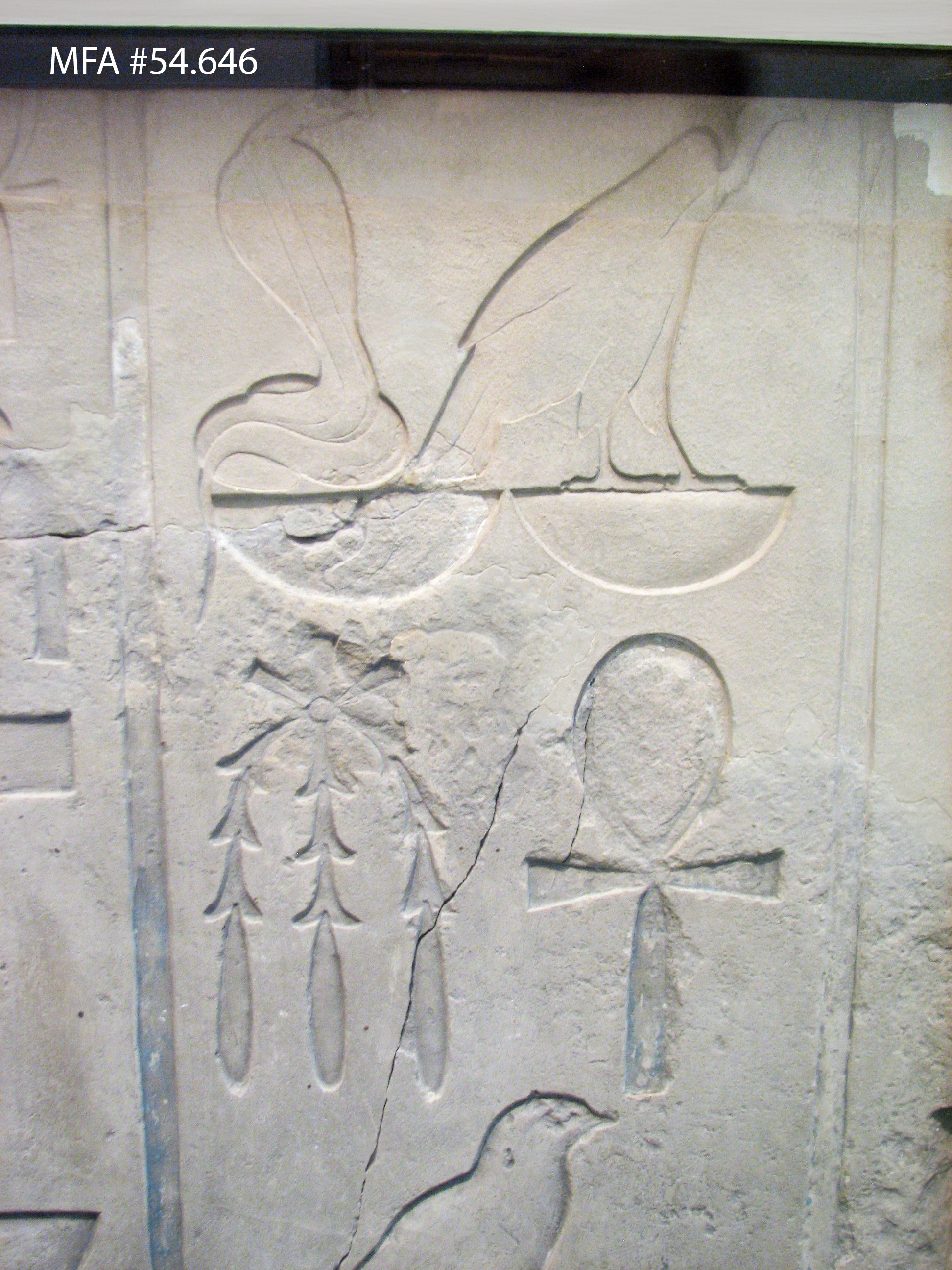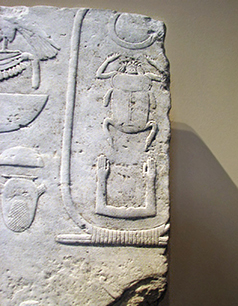
Egypt (el-Lisht, court of the pyramid temple of Senwosret I), Middle Kingdom, Dynasty 12, 1971–1926 B.C.E.
Limestone, Height x width x thickness: 52 x 58.3 x 13 cm (20 1/2 x 22 15/16 x 5 1/8 in.)
Museum of Fine Arts, Boston—Metropolitan Museum of Art, New York Exchange 1954, MFA #54.645
Photos © Joan Ann Lansberry
"In a royal mortuary temple, the king was the focus of worship and the principal subject of the decoration. This fragment comes from the upper part of a scene in the funerary temple adjacent to King Senwosret I's pyramid at el-Lisht. The falcon represents Behdet, a form of the sky god Horus, the patron deity of kingship. He holds the hieroglyph for 'life' and is identified as 'the great god, lord of the sky.' Below him is the upper part of the king's name, introduced by the title 'Son of Ra.' Sunk relief like this was usually used on the exterio of buildings, where it showed up well in the strong sunlight. It is therefore likely that this fragment once decorated an open courtyard." (From info card)





